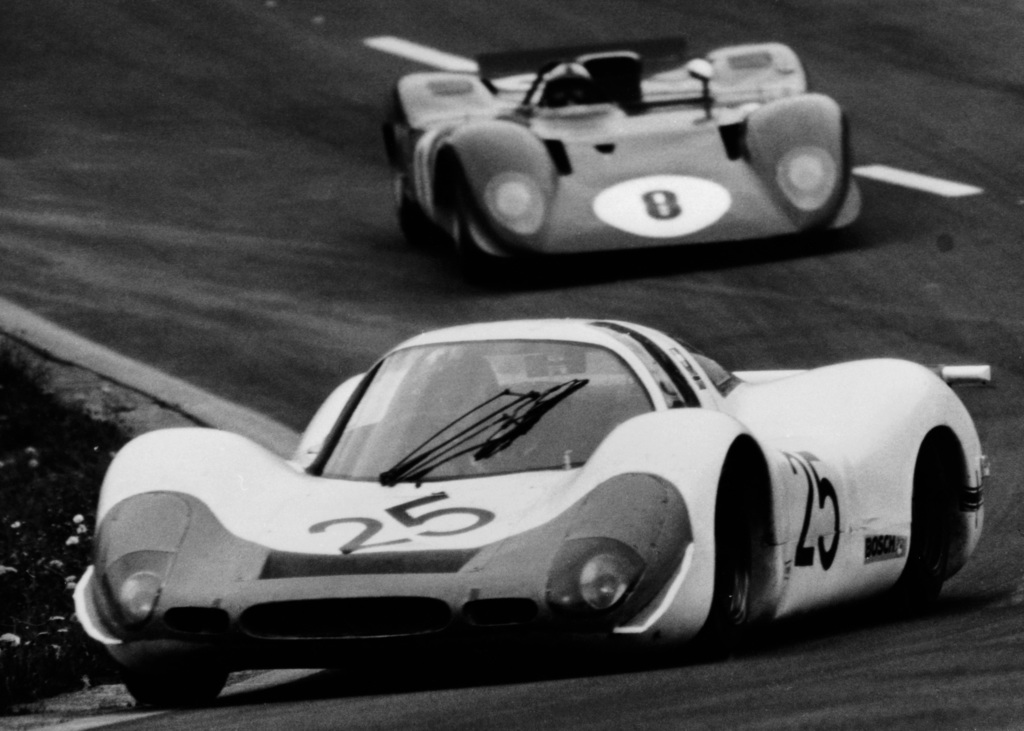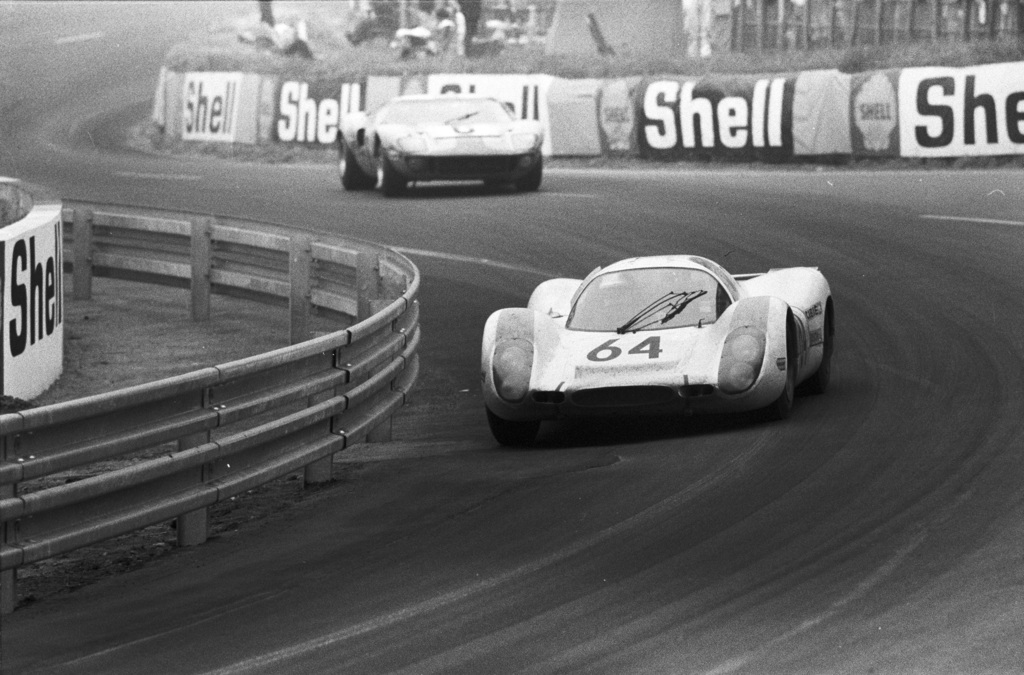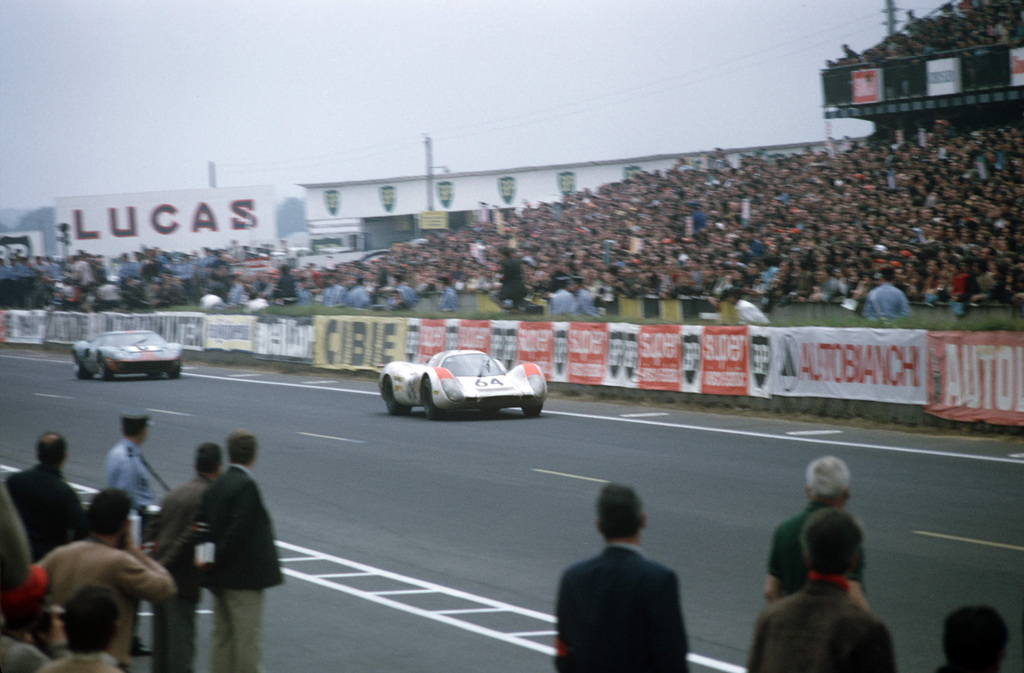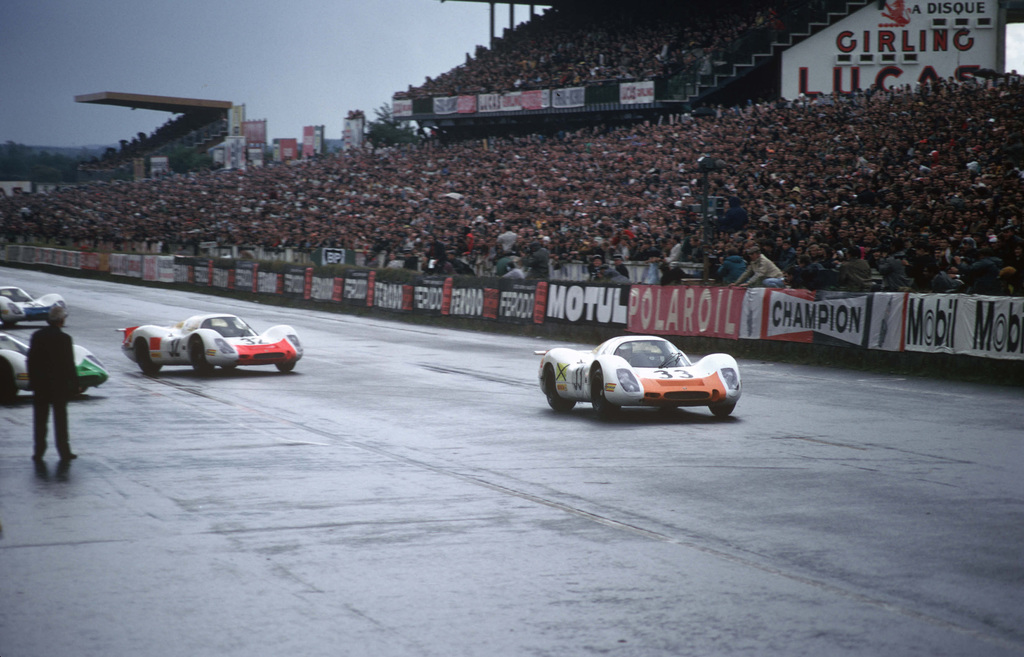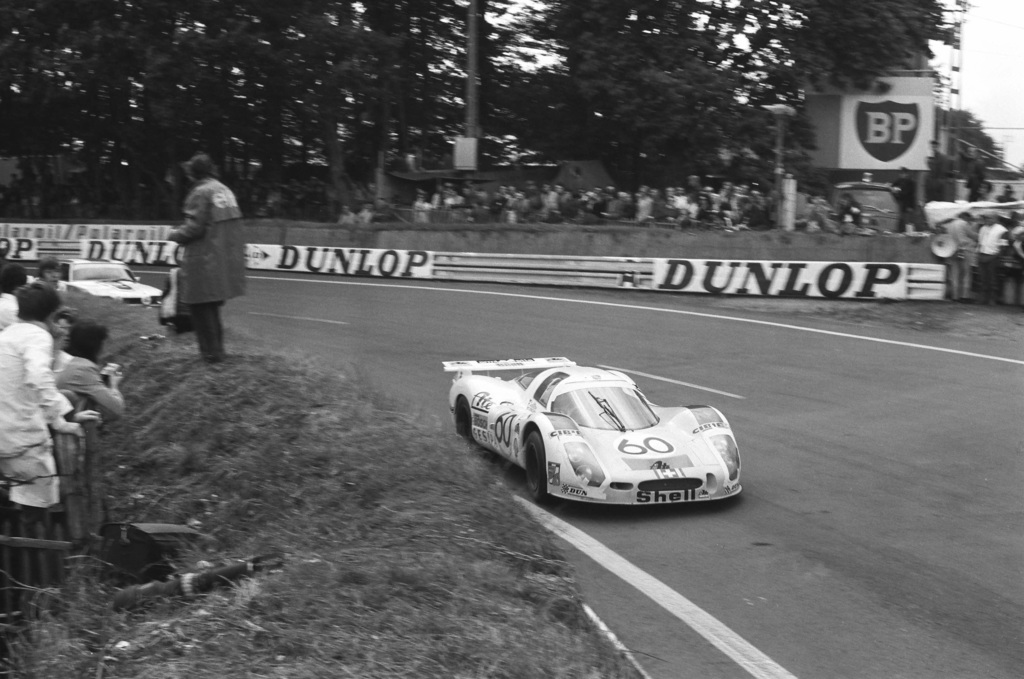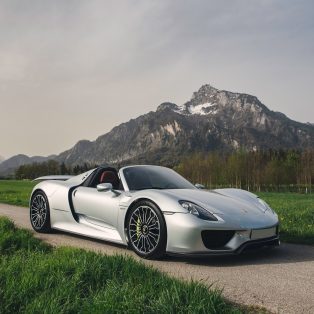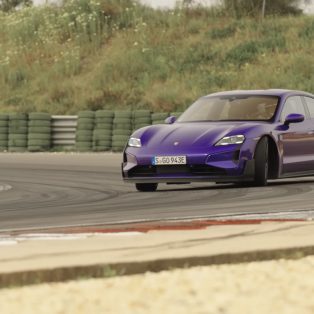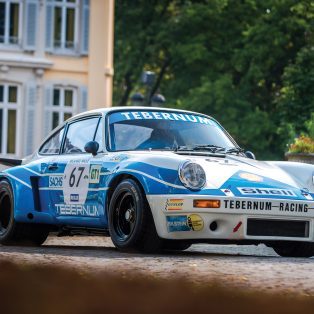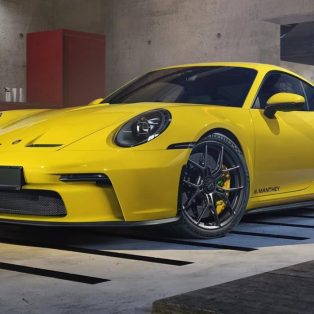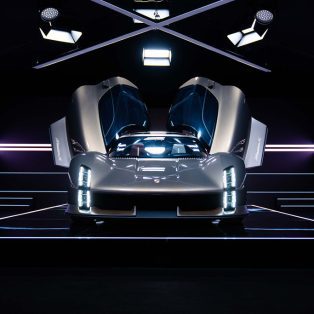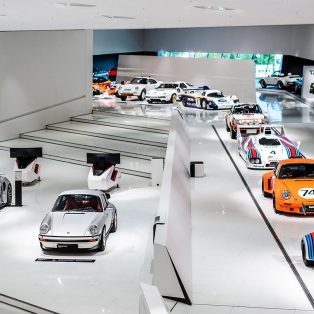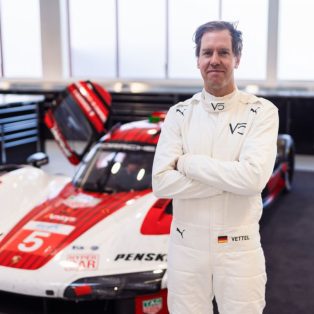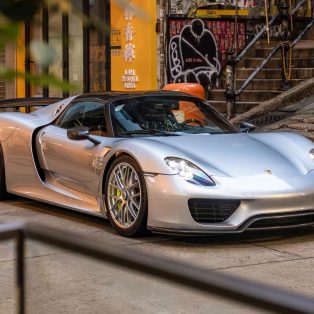1968→1969 Porsche 908 Coupé
In the late sixties, Ferdinand Piëch wanted Porsche at the top of motor sports and the 908 was his answer. In facing the best that both Ferrari and Ford could produce, it sparked a new generation of Porche prototypes that led to their most successful era. For the first time, Porsche completed in all the championship races with hopes of overall victory. This new era began when the 908 Coupés supported the much smaller 907 mid way through the 1968 championship season.
The 908 was the first car built for the CSI’s prototype Group 6 class that limited engine capacity to 3 liters. In 1968 the only competition came from the JW Engineering Ford GT40s which won Le Mans and the championship.
The 908 prototype was named after its eight-cylinder, flat-6 engine. Driven by some of the best drivers, the 908 had a successful career in 1968/69 that included wins at the SPA-Franchorchamps 1000km two years in a row. Under continual development, the design was modified and raced as the 908/2 and 908/3 Spyder for tighter tracks.
Porsche prototypes can trace their roots back to the 904 Carrera GT, but the 908’s immediate predecessor was the 907. It was a 2.2-liter prototype that secured several key victories in 1968, but often lagged behind the four-liter Ferraris on the faster tracks. The 908 was essentially an upgraded 907, fitted with a three-litre engine for the new 1968 regulations set forth by the Federation Internationale de l’Automobile for the World Championship of Makes. This stepwise evolution was typical of Porsche practice between the 907, 908, 910 and 917.
Ferdinand Piëch was very interested in seeing Porsche succeed on the track. He wanted his cars to be as light and aerodynamically efficient as possible. This meant constant development of the body and chassis. Initially the eight-cylinder engine was first tested in a 907 chassis and the problems of cabin heat and engine vibration had to be addressed. The first two 908s appeared almost identical to the 907 at the 1968 Le Mans Test Days, including a similar spaceframe chassis, fiberglass bodywork and a sleek coupé cabin.
Engine work began as early as July 1967 and the first was completed four months later. It was designed by Hans Mezger with a possibility it would used in Porsche road cars. The new eight was ready at Monza in 1968 with 330 bhp and later “the best examples developed nearly 370 bhp.”¹ Like all previous Porsche engines these were air-cooled with a large engine shroud and fan. It was loosely based of the Type 916, four-cylinder engine from the 914. This meant it was much easier to work on compared to the laborious Type 771 in the 907.
From the project’s onset, the design was constantly reevaluated and this is particularly true with the body aerodynamics. In a search for downforce the Le Mans cars featured longtail bodywork which were later updated with moving flaps and rear wings. Alongside these raced the short tail versions which eventually lost their tops and became the 908/2 Spyder for the 1969 season. That year the FIA announced new rules that removed minimum weight restrictions, luggage space and a spare tire provision. Both the 1969 908 Langheck Coupé and 902/Spyder were used throughout the season. Many of the components were reevaluated included an aluminum chassis frame,
Racing
The 908s first began racing in the middle of the 1968 championship season at Monza. Despite placing well in qualifying, the 908s suffered and placed behind the old 907 and the winning Group 4 GT40s from JW Engineering. Fortunately the 6th stop in the series at the Nürburgring 1000km brought success. Vic Elford and Jo Siffert won three minutes ahead of the second place 907. At SPA Francorchamps, the 908 really proved its worth with Belgian driver Jacky Ickx. He was able to lap the entire field due to his mastery of the course and the wet conditions. Beating the GT40 on American soil wasn’t so easy. Both 908s had to make numerous pit stops at Watkin’s Glen and lost the race to Ford. The Grand Prix of Austria was the ninth stop in the championship and marked a Porsche 1-2 victory
Le Mans marked the end of the season with both Porsche and Ford eligible to take the Manufacturer’s Championship. Porsche came well equipped and Ferdinand Piëch ordered the cars to have reinforced drive trains which unfortunately, wasn’t enough. Despite getting pole, the all 5 factory Porsches suffered from various reliability problems. A 907 managed to score second place, but five laps down on the leading Gulf GT40. The championship was Ford’s.
Unfortunately, the 908 was finished too late to win the championship. Not all was lost since Porsche was developing the 917 for the upcoming season. Furthermore, the new 1969 regulations allowed them to convert the 908 into a spyder for some of the tighter tracks like the Targa Florio and Nürburgring 1000km. New regulations meant both versions could be lighter and Porsche fitted a new 5-Speed gearbox, aluminum chassis and numerous other alloy components. Even balsa wood was used as filler. Both the 908 Langheck Coupés and the 908/2 Spyders were used in the 1969 season. Depending on the track, it was typically one or the other.
Five 908 Coupés were prepared for the opening round at Dayonta where they could take advantage of the top speed on the long sloped section. Unfortunately, none failed to finish and a defect was later found in the valvetrain. Coupés weren’t used again until Monza in May, but the car of Brian Redman and Jo Siffert prevailed in first. Again, the 908 won the SPA-Franchorchamps 1000km in the hands of Brian Redman and Jo Siffert.
At SPA, Porsche was testing the new 917 but many drivers preferred the tried and tested 908. At Le Mans, Hans Herrmann and Gérard Larrousse had precisely this idea and raced a 908 Coupé alongside the two 917s which eventually retired. Porsche’s only hope was the remaining 908, but it finished just seconds behind the Ford GT40. It was sad end to the 908 Coupé’s career, effectively being replaced by the 917 and 908/2 Spyder thereafter. It was a bitter defeat, but Porsche won seven out of ten races in 1969 and took the championship with it.
Sources & Further Reading
1.Boschen, Lothar and Jurgen Barth. The Porsche Book: A Definitive Illustrated History. Cambridge: 1982.
2.Jorg, Thomas et al. Porsche 908: Seriensieger, Spezialist und Dauerläufer. Heel Verlag Gmbh: 2007.
3.Ludvigsen, Karl.Porsche: Excellence was Expected, The Complete History of the Sports and Racing Cars.. Princeton Publishing Inc. Princeton: 1977.
4.Barth,Jürgen Barth & Gustav Büsing. The Porsche Book,The Complete History of Types and Models. David Bull Publishing: 2009.
In Detail
| type | Racing Car |
| production years | 1968 – 1969 |
| built at | Zuffenhausen, Germany |
| predeccesor | 1968 Porsche 907 |
| succeccesor | 1969 Porsche 917 |
| engine | Air-Cooled Boxer-8 |
| position | Mid Longitudindal |
| aspiration | Natural |
| ignition | Twin Plug |
| valvetrain | SOHC, 2 Valves per Cyl |
| fuel feed | Bosch Mechanical Injection |
| displacement | 2996 cc / 182.8 in³ |
| bore | 85 mm / 3.35 in |
| stroke | 66 mm / 2.6 in |
| compression | 10.3:1 |
| engine designer | Hans Mezger |
| power | 261.0 kw / 350 bhp @ 8500 rpm |
| specific output | 116.82 bhp per litre |
| bhp/weight | 538.46 bhp per tonne |
| body / frame | Fibreglass Boby over Aluminum Tubular Frame |
| driven wheels | RWD |
| front brakes | Dunlop Discs |
| rear brakes | Dunlop Discs |
| steering | Rack & Pinion |
| f suspension | Double Wishbones w/Coil Springs, Shock Absorbers, Anti-Roll Bar |
| r suspension | Upper & Lower Links w/Coil Springs, Shock Absorbers, Anti-Roll Bar |
| curb weight | 650 kg / 1433 lbs |
| wheelbase | 2300 mm / 90.6 in |
| front track | 1486 mm / 58.5 in |
| rear track | 1453 mm / 57.2 in |
| length | 4839 mm / 190.5 in |
| width | 1720 mm / 67.7 in |
| height | 930 mm / 36.6 in |
| transmission | 5-Speed Manual |
| key drivers | Jo Siffert, Vic Elford, Ludovico Scarfiotti, Hans Hermann, Jacky Ickx, Brian Redman |
| race victories | 1968 Nürburgring 1000km, 1968 SPA-Franchorchamps 1000km, 1969 Monza 1000km, 1969 SPA-Franchorchamps 1000km |





